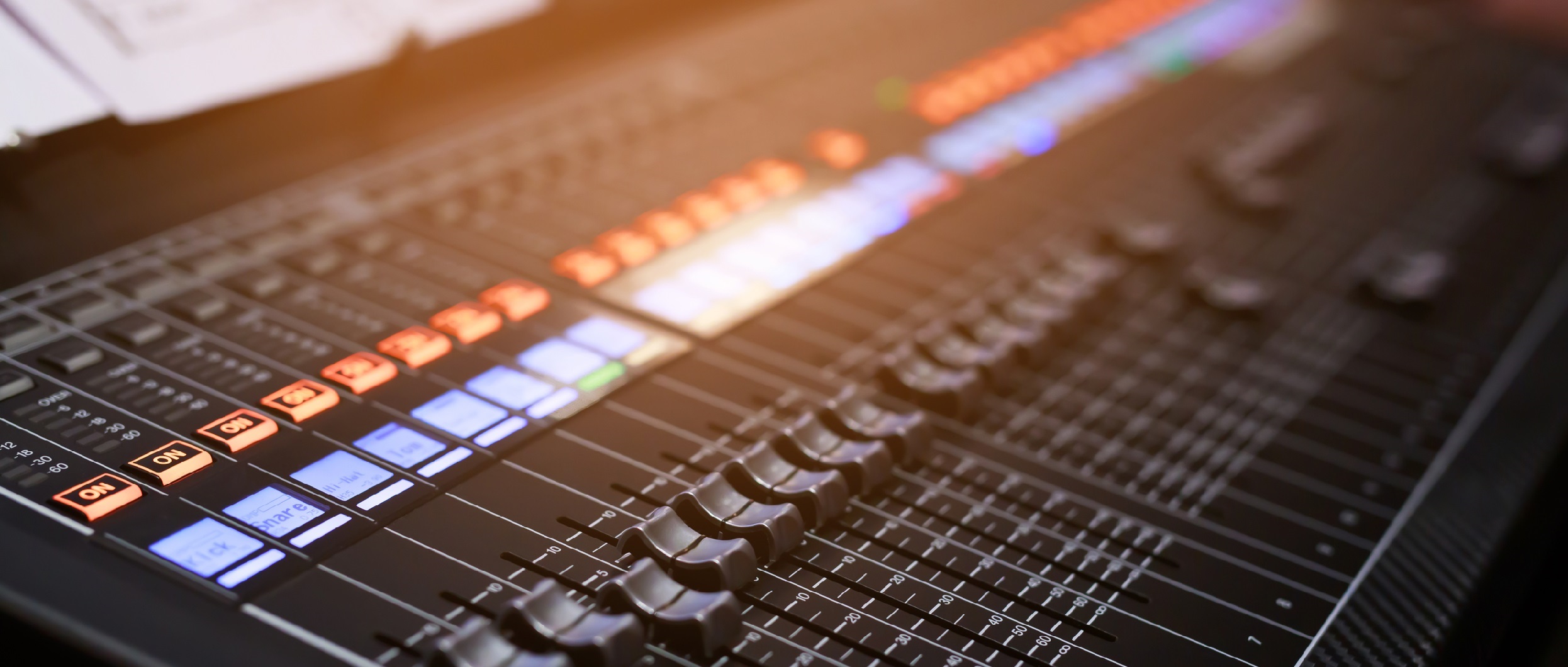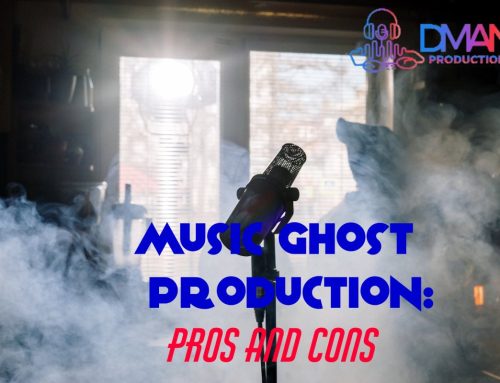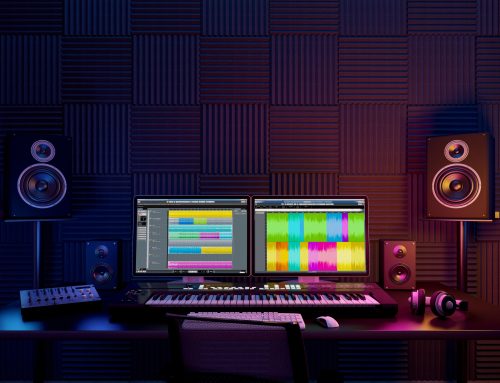
Every sound we hear in a film, including the film score, the dialogues, ambiance, sound effects, etc., is one small piece of its soundscape, and we owe it to the film sound design. A sound designer combines these different pieces of audio to reach a better, more refined, cohesive, and realistic outcome.
Film sound design is a broad field that includes various processes. In this article, you will get more familiar with these processes, the importance of sound design and film scoring, and the knowledge, software, and tools that a good sound designer needs.
Our creative music producers are ready to help you with your music project. Give us a call to discuss more.
What Is Film Sound Design?
When we are watching a movie, or any other production for that matter, we are so hung up on the visual elements that we do not appreciate the soundscape. But the fact is without a professional film sound design, you will feel the movie is unrealistic, unauthentic, boring, and unrelatable, to say the least.
A film sound design includes the following processes:
- Mixing,
- Recording,
- Composing for film,
- Sampling,
- Generating (new audio elements),
- Editing,
- Film scoring,
and more. This is how the dialogues, different soundtracks and the movie score, the ambiance or the atmosphere, and sound effects and foley are created and combined to form the final film soundscape.
Although we are focusing on film sound design in this article, sound design is an indispensable part of most productions, such as theater, TV shows, music, video games, commercials, etc.
Why Is a Professional Sound Design for a Film Important?
Different audio elements bring a movie to life. They make it possible for a film to have its own mood and tone, and to make people feel in a certain way.
Let’s explore the ways sound design can enhance a film.
Sound Design Is the Best Tool to Create Off-Screen Space
Off-screen space refers to any feature in the space around the character(s) that is not in the frame. In other words, the space that the audience cannot see, but knows it exists usually based on the sounds (there are other ways to create off-screen space as well, such as lighting). For example, the sound of traffic in the background makes you aware of the fact that the character is in a crowded street, even though you cannot see the traffic in the frame.
Therefore, through the art of sound design, filmmakers can create offscreen space for more dramatic effects, making the production easier or less expensive to produce (saving time and money), and leaving a few things to the viewers’ imagination.
Creating Sound Bridges to Bridge the Gap Between Scenes
Sound bridge or audio bridge is a technique used to fill the gaps between two scenes in a film when the transition happens. For example, we start hearing the sound from the next scene before the scene actually starts.
Incorporating sound bridges is part of a film sound design to create a sense of continuity.
Evoking and Conveying Emotions
One of the most important purposes of a film, or other art forms, is to make the viewer feel a certain kind of emotion. In fact, if you see a movie and it cannot evoke any feelings in you, you will judge it as unrelatable.
These emotions can include anything, from shock, sadness, or happiness, to fear and more. Through such feelings, the message of a film is conveyed and its purpose is fulfilled.
Now, sound design is one of the two powerful tools (besides visual elements) that can create emotions in a film. Using appropriate soundtracks, sound effects, score, and even silence in the right place will make a scene engaging and unforgettable.
For example, most people who watched the movie ‘Gravity’ in 2013 may not remember a lot of the plot, but they can remember the heavy silence of space that conveyed a sense of fear and loneliness. Not surprisingly, its brilliant sound design and the creative use of ‘the sound of silence’ brought about Oscar nominations for the best original score, the best sound mixing, and the best sound editing for the movie.
Featuring Audio Elements to Set the Location
A movie scene can be set in a normal familiar urban area or an unfamiliar fantasy world. The job of visual elements and audio elements is to make the location believable and natural for the audience.
As mentioned above, creating off-screen space is mainly done through sound design. But it can also help to make a scene natural and realistic with the help of atmospheric noise. Such background sounds will affect the audience subconsciously and put them in a place the filmmaker wants them to be.
For instance, when a scene is located in a foreign country, a background sound of people speaking in the local language is necessary to make the scene believable. Another easy example is war movies, such as the movie ‘Saving Private Ryan’ which takes us from our home to Normandy in World War II through its superb use of atmospheric noise.
Adding Soundtracks and Film Score
Last but definitely not least, adding the right soundtracks and scoring music for a movie is part of a film’s sound design. As this is the most effective tool to impact the audience, we will discuss it in detail in the following section.
We offer the most affordable music production services and you do not need to even leave your home. Call us to get a quote.
The Importance of Film Scoring and Film Composer
Movie sound design can include film scoring, which is scoring original music for a specific film, such as the amazing music Howard Shore made for the Lord of the Rings trilogy. Sometimes this movie score is produced by the same person who does the sound design, sometimes a film composer does it.
How Does a Film Composer Score Movie?
The film composer, or a film scorer, usually starts scoring music after the entire movie is filmed, or at least a part of it is. The reason mainly is that the film score must capture the mood, message, and emotions the film is trying to convey. So, the film’s composer must get more familiar with these factors before scoring music.
After film scorers make a part of the original score ready, they perform it for the filmmakers (the director and the producer) to see if it is what they want for their movie. Then they complete it or make some adjustments if needed.
So, composing for film is not an easy task. A successful movie composer must know a lot about arts (especially films) and culture besides music. Some of the most famous film composers are Hans Zimmer, John Williams, Ennio Morricone, and Vangelis.
How Film Scoring Can Elevate a Film?
Perhaps the most powerful tool in sound design for creating emotions and mood, conveying nonverbal messages, and telling the story is the film soundtrack and score. A good film score establishes the right ambiance, highlights the scene, and takes you to that time, place, and situation.
For example, the wonderful score composed by John Williams for the movie ‘Memoirs of a Geisha’ can take you to old Japan even if you are just listening to the song and not watching the film.
Moreover, movie scores help the viewer to read between the lines and learn more about the characters and events than what is shown.
So, if you well up while watching a scene, laugh, startle, or your heart starts pounding, it has something to do with the movie soundtrack and score.
Film Soundtrack vs. Film Score
Although these two terms are commonly used interchangeably, there is a technical difference between an original score and a soundtrack.
As we have already discussed, a score is a film’s original music that has been composed exclusively for that movie. However, a film can feature other songs as well. Songs that may or may not be created by the film composer.
Therefore, all the songs that are selected to be used in a film make up the soundtrack of that film.
Who Is a Film Sound Designer?
With the rise in the use of technology in sound recording and production about half a century ago, the need for having an expert in utilizing such advanced technological equipment also increased. This led filmmakers to search for professional sound designers who have great knowledge and skills in
- Designing and recording original sounds needed for the film,
- Selecting and using sounds from a sound library,
- Mixing and editing audio elements and incorporating them appropriately into the film,
- Foley, which means adding sound effects,
- Composing and preparing the film soundtrack.
Of course, a sound designer can be hired to do just some of these tasks. That’s why in many top-level productions, the sound designer cooperates with the film composer, the film sound editor, the production sound mixer, the foley artist, etc. to accomplish the film sound design.
The Equipment a Movie Sound Designer Needs
A sound designer needs top-notch equipment to do their tasks professionally, including
- Microphones, recorders, transducers,
- Computer and DAW,
- Sound libraries,
- A studio,
- Objects and instruments to create and record new original sounds,
- Software, such as Pro Tools, Logic Pro, Adobe Audition, etc.
These sound design equipment and software are the main sound design tools. You will need to own them and learn how to create magic with them if you aspire to become a sound designer.
Except for music production services, we also offer rental sound equipment in Kansas City.Call for more information.
Get Professional Music Production Services at D Man Productions
D Man Productions is located in Kansas City, Missouri, but offers various online music production services as well. This includes producing music for your advertisements and making jingles.
Our experienced sound engineers can produce, mix, and master any music type, especially hip-hop and R&B. Although our music recording studio creates first-rate musical products, all our music production services are affordable to assist low-budget projects. So, let us elevate your work.
You can call us at 816-313-2788 to discuss your project. Or fill out this form and we will get back to you.


